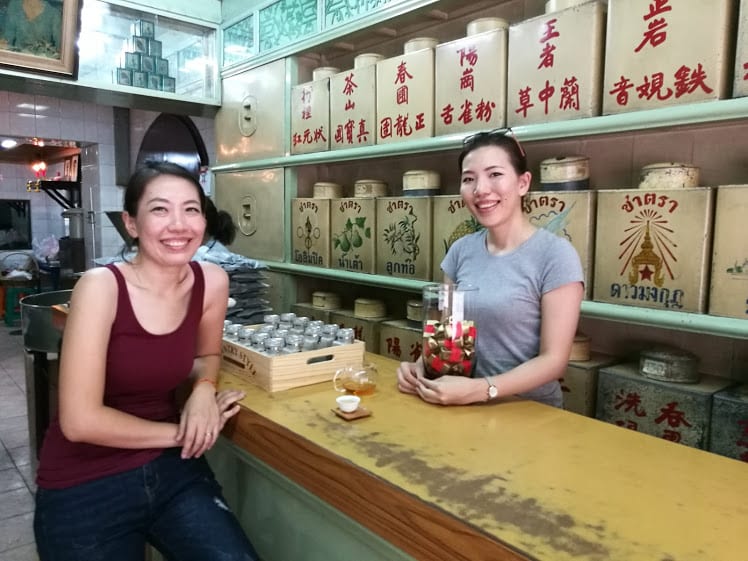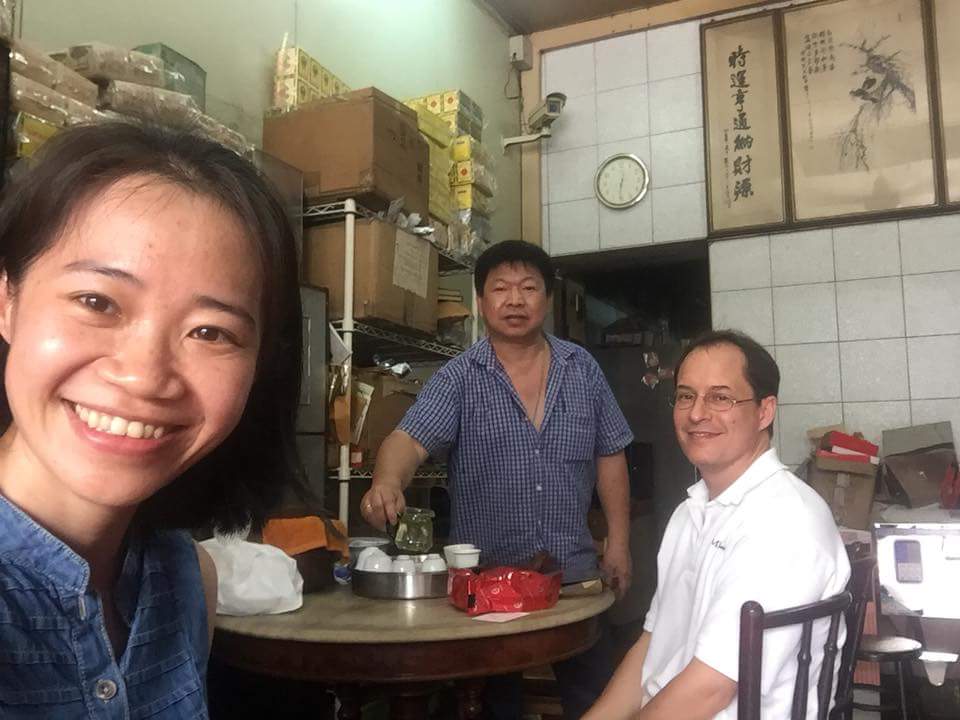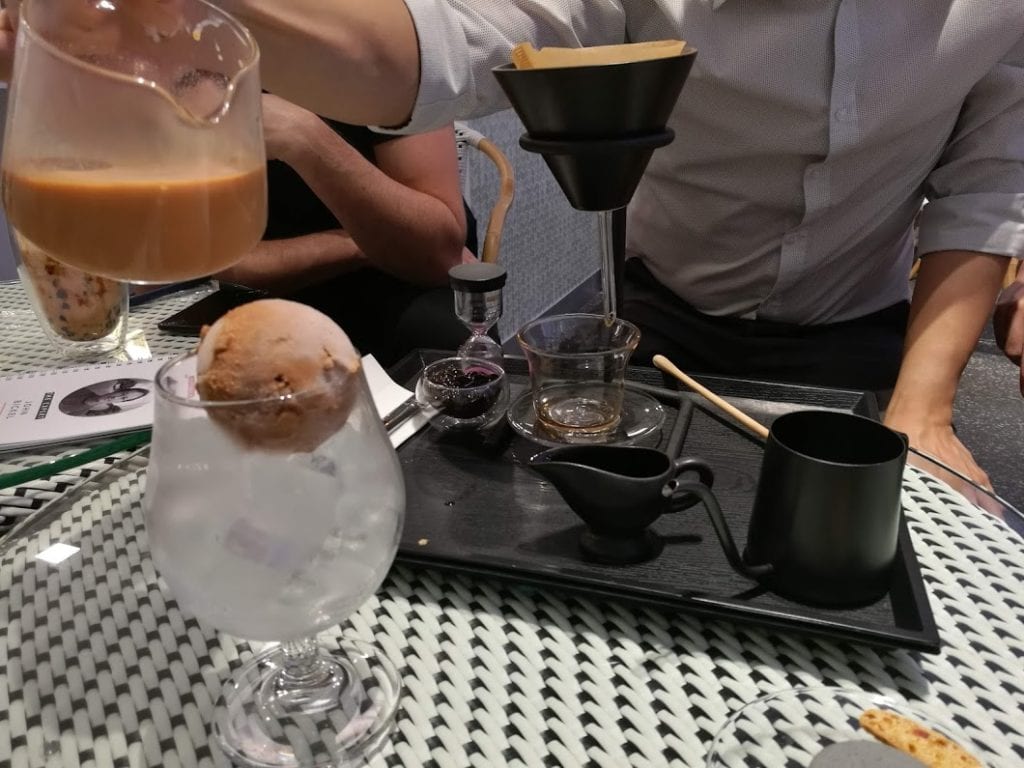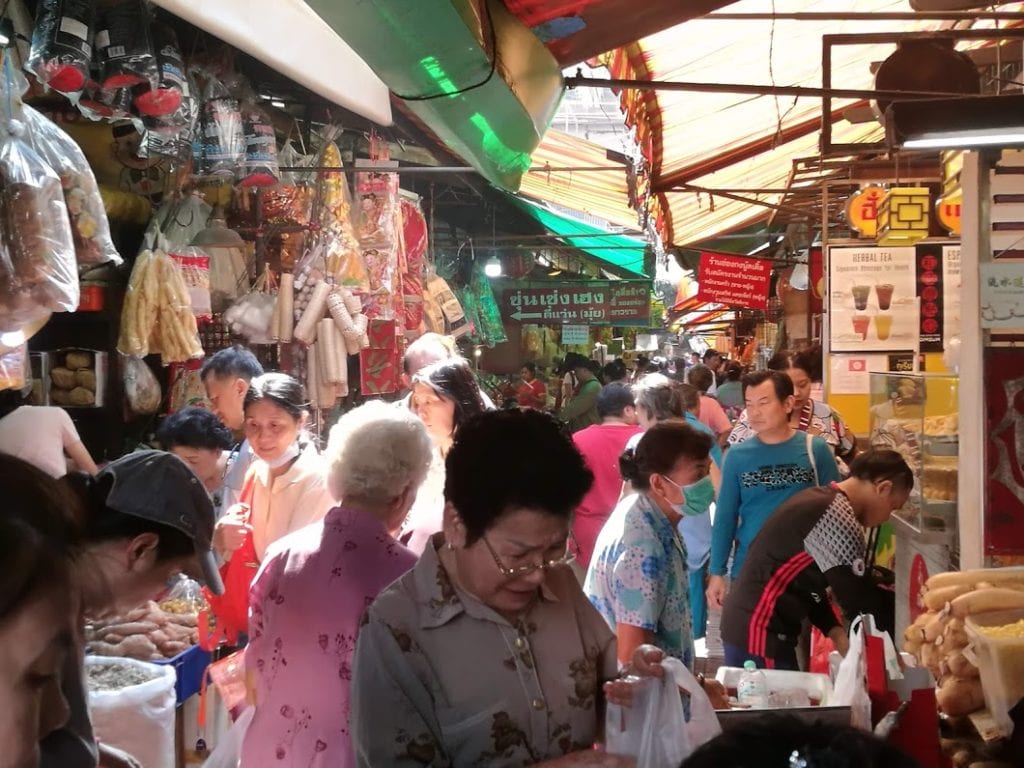Tuk Tuk Tours
Explore Bangkok by the iconic tuk tuk
This is a guest post by John Bickel, who is a Bangkok based tea hobbyist and runs the blog Tea in the Ancient World.
When it comes to the tea culture and traditions in Thailand, really more stays the same than changes. But describing what is new makes more sense in comparison to older forms of tea interest.
Since what is new and different in Thailand, especially in Bangkok, draws more attention this will split discussion of both.

There are tea trees growing in the North of Thailand that are older than the modern history of the country. Throughout a lot of South East Asia (Myanmar, Northern Laos, Vietnam, even Assam in India) very old Assamica variety tea trees relate to very old cultivation and consumption of tea throughout the region. Even the types produced are somewhat continuous with those in Yunnan, China, where the oldest history of tea plant growth is thought to originate.
Yunnan, China is best known for the production of sheng and shu pu’er (although Dian Hong, their black tea, is very nice, and Moonlight White is also a personal favorite). Sheng, or the “raw” version, is closest to green tea, with shu, or “cooked” pre-fermented using a wet piling step. These types are found in the North of Thailand too, but the practice of producing shu has been recently re-introduced.
Thailand is best known for producing oolong tea, similar in style to that in Taiwan, and also based on use of plant type hybrids from that country. The story is that in Northern Thailand in the early 90s, King Rama 9 supported the import of tea plants and production, to replace growing opium poppy.
Assamica based black tea similar to commercial versions of Assam or Ceylon are also produced around Chiang Mai, with those other oolong plantations generally located slightly further North in Chiang Rai. You can still buy black tea served with sweetened condensed milk in old-style restaurants in older parts of Bangkok, brewed in an infusion device that resembles a small wind-sock, a cloth bag. That similar to the “teh tarik” form in Malaysia, their “pulled tea.”
At some point a style of flavored “Thai tea” evolved, today orange colored, and artificially flavored, but at an earlier stage perhaps flavored with crushed roasted tamarind seeds and orange blossoms.
All of this relates to a complex, deep history of production and consumption of tea in Thailand. As Thailand evolves tastes and preferences that history keeps changing.
Bubble tea erupted in popularity around this time-frame; flavored, milk and sugar heavy styles of tea, coupled with tapioca pearl inclusion, a style originating in Taiwan. Matcha became popular, ground green tea from Japan.
That Thai flavored tea evolved to be sold from countless stalls and carts throughout Bangkok, most typically in a powdered form, as an instant tea product. It still is available in a loose tea form, one that is often “brewed” using espresso machines in coffee shops, versus using a more conventional soaking process.
Shops in Chinatown retained the same form they had for decades as of this time frame. Old photos of Yaowarat, the main street in Chinatown, look about the same from the 1950s as that street does today.

My favorite Bangkok Chinatown shop, Jip Eu, has been in existence for about 90 years. Thailand’s history of cultural exchange with China goes back much, much further than that. It seems likely that some imported tea products and related customs were available in many prior centuries. But the pace of change is accelerating today.
High end mall shops now produce a broad range of varied bubble tea versions, or other flavored teas. Some utilize pour-over styles borrowed from the modern coffee tradition, or mixing in ingredients like ice cream, which really doesn’t need to be based on any particular inspiration.

It’s likely that traditional teas and varying forms of tisanes are also an input, but the most popular forms relate to broad-appeal inputs like brown sugar and caramel. Gimmicks add a thin form of depth; in the “Fire Tiger” bubble tea chain plastic cups of brown sugar flavored tea are presented through a large golden tiger’s head shaped window, an image perfect for Instagram posting.
Probably a lot of tea and other modern Bangkok traditions are very directly altered by the context of showing others what you experience, as much as you enjoy having the direct experience yourself.
This is often used for marketing a broad range of products, but the connection isn’t as strong as it might be. Green tea is typically seen as the most healthy type, but demand for that type lags far behind that of milk and sugar heavy flavored black teas. There are simply too many separate health claims used for marketing for many to gain traction.
“Slimming teas” popular in “places” like Instagram largely came and went, as people realized that diuretics and laxatives could lead to very short term weight loss, but couldn’t support longer term health. This health-marketing theme never will completely drop out though.
In “the West” fresh ground matcha gains traction, and to some extent such options are available in Bangkok as well. These never will eclipse the broad appeal of bubble tea. Matcha latte and ice cream stands are more common; trends tend to typically not connect health benefits concerns and demand for the highest quality versions. Hojicha, roasted Japanese green tea, is also prepared in a powdered form now, and it also quite pleasant when mixed with ice cream, as matcha is.
This has a popular theme in “the West” for the past decade. Large-scale commercial vendors like Teavana, T2, Tazo, and David’s Tea popularizing teas mixed with other herbs, flowers and such. There is great potential for a broad range of appeal based on development of all sorts of flavor profiles. Inexpensive, lower quality teas can be used as inputs, since negative aspects or limitations of those can be offset by other ingredients.
These can also serve as a “gateway” to other tea interest, which is probably one reason why those outlets tend to de-emphasize their presented range of other plain tea types, to keep the focus within their own product scope. The failure of Teavana as a business (the closure of all US mall shops) highlights limitations in developing this market demand. But that also must have related to a decline in US mall foot traffic, as online shopping became more popular.
Not so broad in form, just yet, but this is happening. A few shop and café outlets are developing this range. Since the demand and awareness is still limited this approach seems to couple best with sales offering of flavored teas, take-away versions, and food sales.
Better tea interest may never become a broad, popular trend. Person by person awareness and preference can change, and cafes and restaurants do pursue this theme in rare cases.
Vendors like Monsoon, based out of Chiang Mai, open new shops in Bangkok and cover a range of different bases, offering plain, traditional teas and flavored versions. They emphasize a “forest friendly” context; probably part sales-pitch, part good intentions. As time goes on conservation efforts will mature, and retaining as much economic benefit from natural, undeveloped areas will help support other conservation approaches based on just leaving broad areas alone.

Chinatown remains the hub of traditional tea forms and sources in Bangkok. Street stalls and small shops sell oolongs and other versions in open-bin form. This is the absolute worst method of tea storage, letting it sit out to lose flavor as the heat and humidity transition or degrade flavorful and healthy compounds. Other shops retain more careful and traditional practices. To buy the recent Spring’s fresh Longjing, a popular green tea in China, you need to ask in shops. Then they bring out carefully sealed, refrigerated bags for you to smell and sample brewed versions from.
Chinatown is an amazing experience on that and other levels, a maze of wholesale shops, street-vendor foods, aromatic local market alleys, street art, old temples (even Chinese versions, there), and unique and dated architecture. No one of those things is such a draw that it’s worth a trip, but to the right person it’s a wonderful world to explore. We walk through these small alleys of Talad Mai on our Snacks, Markets & More walking tour.
To a tea enthusiast there are broad gaps in current local awareness. Sheng pu’er, most often sold in disk-like “cake” or bing form, is often sold in forms that are low in quality, and not always what they are labeled as.
Many oolongs are based on a Wuyishan, Fujian area style, “rock oolongs” like Da Hong Pao or Rou Gui. Often local versions are roasted to a scorched character, partly because that reflects local preference, and also because it enables resale of very flawed, mixed-input versions. Often local versions of this type of tea are Thai-grown, very mixed in character and background, most typically sold very low cost.
Luckily Thai oolong is fairly decent, so exposure and access to moderately good local tea is common enough, even if relatively few people are drinking it. Thai iced tea, the orange version, and bubble teas are pretty good, just not really traditional, or particularly healthy, and those are everywhere. Eventually tea interest might link together with a health concern, or new wave of food trends, but until then it’s only a few of us local tea enthusiasts and older Chinese-Thai locals giving the subject much attention.
At Expique our mission is to help people discover the real Bangkok (and beyond) and the local cultures. We do this through a combination of offering our own award winning tours and through producing informative content.
Our range of experiences in Bangkok including our award winning Bangkok Night Lights Tuk Tuk Tour and our foodie extravaganza Evening Food & Tuk Tuk Adventure.
Subscribe to our newsletter to receive monthly news and tips about exploring Bangkok.